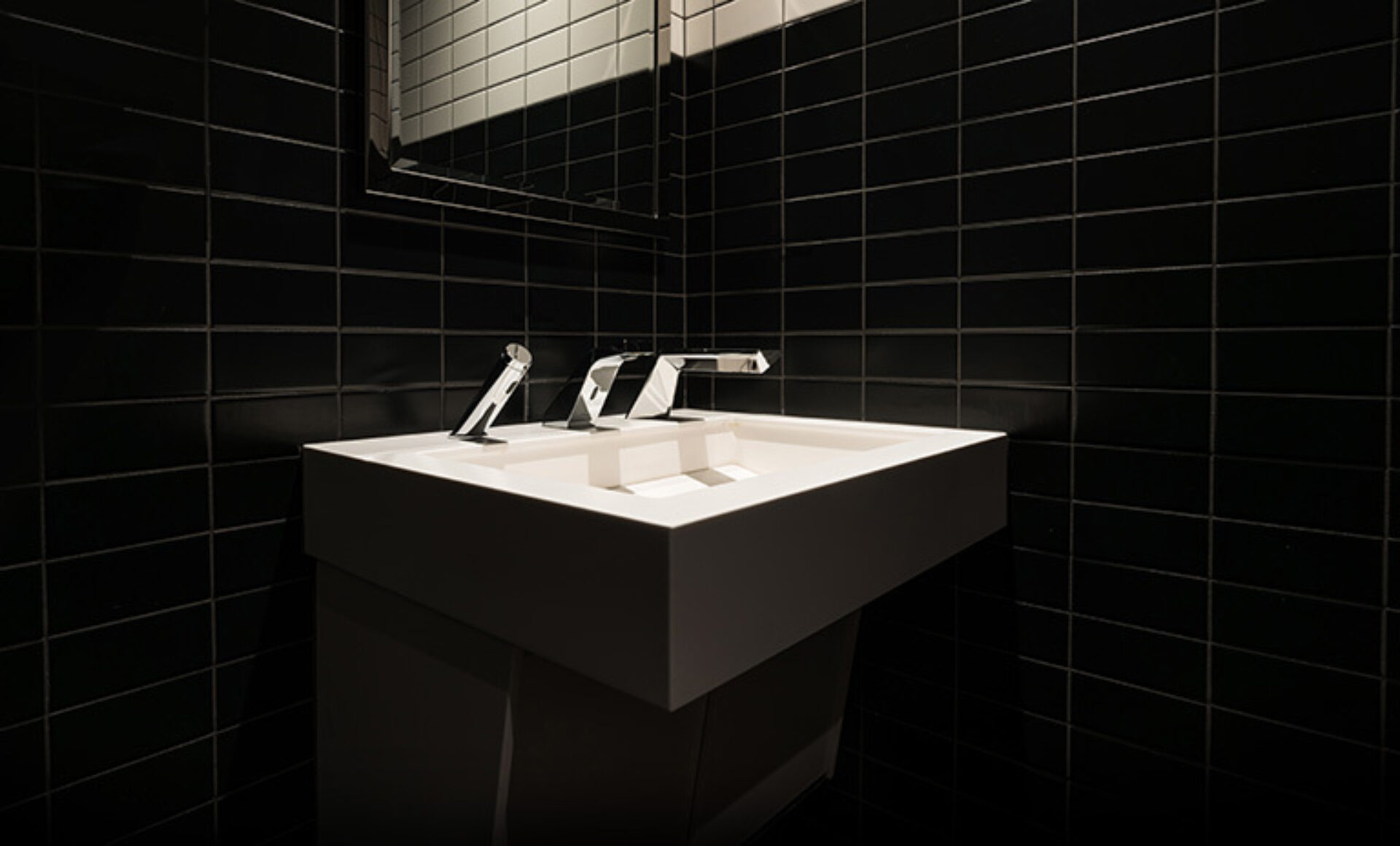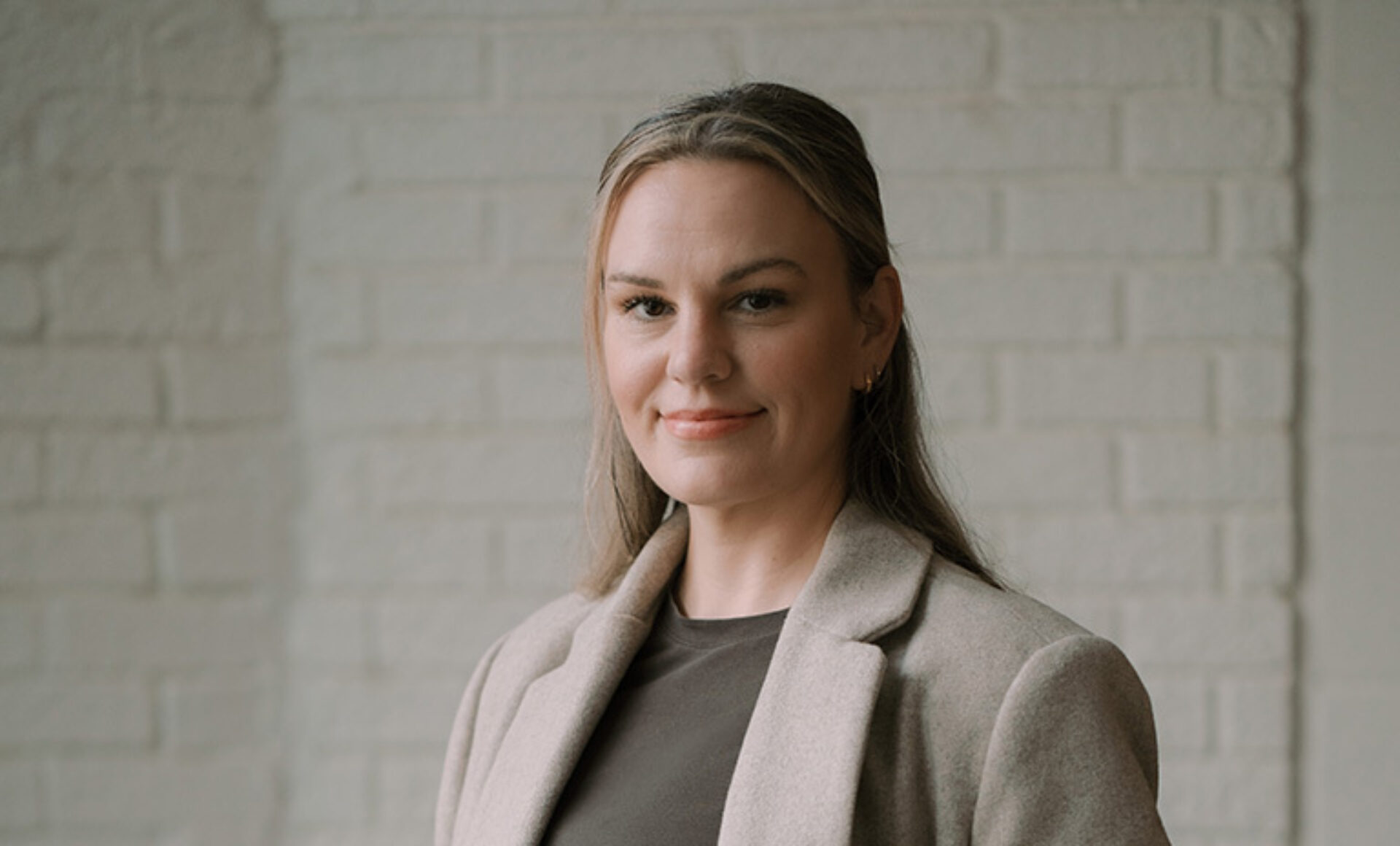Combining her eye-popping design with sustainable practices, Rochelle Porter brings her drawings and sketches to life in textiles and wallpapers for commercial and residential interiors. Lush and luxe, her patterns are globally inspired — from her Carribean roots (she was born in Guyana) to Scandinavian and West African influences, these designs will transform any space to a place of joy and comfort. It’s no surprise that Porter, Ind. IIDA, CEO and creative director at Rochelle Porter Design, is the 2025 Anna Hernandez / Luna Textiles Award winner, an award for women designers in the first 10 years of owning their own business.
Porter, like many designers, came to the field after realizing that she wasn’t just drawn to design and creativity, she had an undeniable vision that needed to be pursued. With a little nudging from friends and a background in business, she took her doodles and began a soft homegoods line, popping up at stores like West Elm, then further expanding into retail and licensing products for brands like Target.com, HomeGoods, and Macy’s. She realized she deeply loves working with surface design, and with that pivoted to commercial interiors, textiles, and wallcoverings with an aim to — in her own words — “make a lasting impact on interior design, providing functional yet artistic products that inspire creativity, joy, and clarity.”
Here are four things to know about Porter, her work, and the way she sees the world.
Sustainable Materials
From the beginning, Porter has been committed to her brand being rooted in sustainability, a value that is reflected in her production process. “Sustainability is at the root of how we operate. It’s not an afterthought or a marketing angle, but a core part of how and why my company exists,” she explains. She works with low-waste production methods, eco-friendly dyes, and partners with ethical small- to mid-sized factories based regionally in Atlanta and the Carolinas. Her wallpapers include a biodegradable natural-fiber material and recycled PVC- and toxin-free material (without lead, heavy metals, or plasticizers) — and her wallcoverings are produced using printing methods with a reduced environmental impact.
For her textiles, she uses materials that are certified by the Better Cotton Initiative and OEKO-TEX Standard 100, and she relies on plastic-free, reusable packaging. “I believe good design shouldn’t come at the expense of the people or the planet,” Porter stresses, “so we’re intentional about including eco-conscious practices into my process wherever possible.”

Image courtesy of Rochelle Porter
Social Impact
Taking her impact a step further, Porter is also dedicated to mentorship and community empowerment as part of her business model, citing her work with Emory University’s Impact Investment Program and the Amani Sewing Center in Atlanta. Through Emory, Porter works with students, mentoring them on entrepreneurship and helping them invest in local, early-stage businesses. “This experience has allowed me to share my entrepreneurial journey while learning from the next generation of thinkers and designers,” she says.
The Amani Sewing Center works with refugees and those granted asylum, offering culturally sensitive support as they work towards economic independence, specifically through home and industrial sewing jobs. These women and their work helped Porter produce her first collection with West Elm, and with it they earned livable wages that may have otherwise been unobtainable.

Photo by Meghan Swanson LLC

Image courtesy of Rochelle Porter Design
The Story Behind the Design
As any designer can attest to, one’s favorite current product or design of their own will change over time with growth as a designer. Porter’s current fave? Fort Greene, a design that started off as a set of meditative strokes on paper. After manipulating and recoloring her work, she realized, “It looked like something from the Bogolan district in Brooklyn,” a bygone Afrocentric cultural district. “I lived there in the early 2000s, when the Fort Greene neighborhood was experiencing an artistic renaissance.” She describes the design as versatile — it’s been used on “everything from wallpaper and fabric to coffee mugs and even clothing.” More recently, Porter adds, it was “customized and specified for the Comcast headquarters in Minneapolis (above) to align with their brand colors. It was exciting to see it come to life in this space.”
Up Next
Porter plans to use the Anna Hernandez / Luna Textiles award, a $5,000 cash prize, to help cover the costs of exhibiting at BDNY (Boutique Design New York) this fall, where she hopes to deepen her network and exposure in the hospitality industry — not only for herself, but she will take her interns as well. With her focus on surface design, she envisions herself working with boutique commercial designers in the workplace, retail, and hospitality markets. You can also catch her at NeoCon 2025, where she was selected to speak about her sustainable design practices and “how doodling can unlock creativity, reduce stress, and spark new ideas.”

Image courtesy of Rochelle Porter Design

Image courtesy of Rochelle Porter






